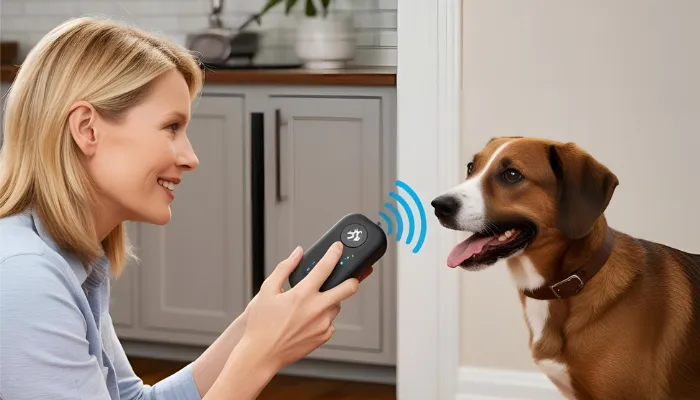How Do Dogs Say “I Miss You”? Although dogs do not understand our language, they deeply yearn for their owners. From tail wagging to taking naps on your side of the bed, dogs have different but unique ways of showing emotions when you are away. Have you ever wondered if a dog translator could help you understand their feelings better?
Learning these behaviors can help ease their anxiety when you are not around and strengthen your bond. Let’s find out how your dogs miss you!

How Do Dogs Show They Miss You?
How Do Dogs Say “I Miss You”? Dogs may not say, “I miss you,” using words, but they possess a myriad of behavioral changes that convey their feelings. Below are some typical signs:
- Excessive tail wagging – Relief and excitement are both communicated through a tail that is wagging rapidly upon your return.
- Whining or barking – While hovering between calls and vocalizations, higher pitched ones indicate a want, so as to use one’s voice for some booming yelling.
- Following you everywhere – Many dogs shadow their owners. It’s possible this was done out of great longing.
- Chewing or destructive behavior – Anxiety driven destruction could also signify separation distress – this phenomenon is called separation anxiety.
- Sleeping in your spot – When a dog lies around on a chair or bed, it suggests something much deeper. The dog is attempting to feel close to you.
These actions depict their emotional bonding, and also how the cope with the owner’s absence. So, through How Do Dogs Say I Miss You? They demonstrate it through care and affection for the owners.
Do Dogs Understand Time Apart?
While dogs may not perceive time the way humans do, they do recognize patterns and routines. Dogs are not able to perceive time as humans do, but they, however, identify patterns and schedules. Other studies propose dogs have a mental clock, which makes them predict the departure and arrival of their mascots. Some key observations include:
- Increased excitement for longer absences – The longer a dog remains separated from their owner, the more extreme their excitement is when being reunited.
- Determining day-to-day routines – They know when you tend to go out and come back, and they associate times with your presence.
- Knowing when you are coming home – Many dogs seem to respond just moments before their owner gets home, perhaps they are hearing or smelling something that is well-known to them.
Dogs may not actually be counting hours, but they sure have a way of sensing how much time has passed in different ways.
Can Dogs Experience Separation Anxiety?
Some dogs handle alone time well, while others struggle with separation anxiety. If you’ve ever wondered, How do dogs say “I miss you”? their reaction to being alone provides a clear answer. This condition can manifest through extreme behaviors, including:
- Excessive howling or barking
- Pacing or restlessness
- Accidents indoors despite being house-trained
- Destructive chewing, especially on personal items
- Attempts to escape or claw at doors
Ways to Help a Dog with Separation Anxiety:
| Strategy | Description |
|---|---|
| Gradual Departures | Practice short absences before leaving for long periods. |
| Comfort Items | Leave a blanket or clothing with your scent. |
| Interactive Toys | Puzzle toys keep them occupied. |
| Routine Exercise | A tired dog is a calmer dog. |
| Professional Training | Consult a trainer for severe cases. |
Managing separation anxiety takes time and patience, but with the right strategies, your dog can feel more secure.
How Do Dogs React When You Return?
The actions of dogs upon seeing their owners can be profoundly heartwarming and covered with excitement. Some ways in which they show their affection includes:
- Jumping and licking – Most pooches to jump up and lick as a show of joy.
- Zoomies (sudden bursts of energy) – Happy running shows a cheerful burst of energy.
- Bringing you a toy – A pooch can pick a particular toy to use as homecoming gesture.
- Happy barking or whining – Some dogs exhibit joy by making bizarre sounds.
These behaviors showcase the emotional attachment dogs share with people.
Conclusion
If you’ve ever asked yourself, How do dogs say “I miss you”? know it has to do with their behavior. Dogs clearly express their longing via tail wagging, some vocalizations, and closely following you. They may not have a firm grasp of time, but they certainly know when you are not there, and most importantly, get emotional when you return.
For your dog, strengthening your bond can be achieved via routines and affection that serve as affirmation that you will always return. Thus, next time you leave, remember that the dog is expectantly waiting for the return.
